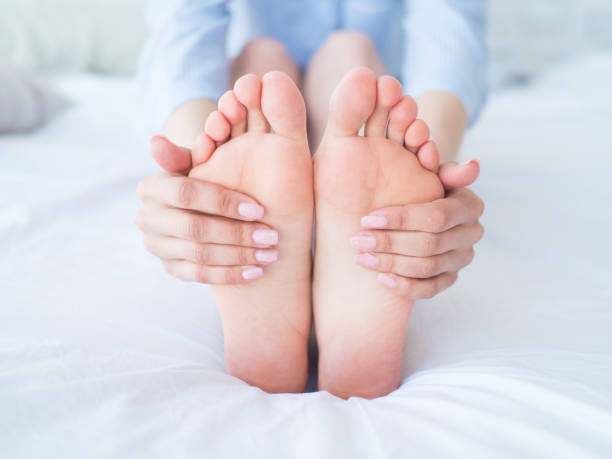Key Takeaways
- Regular foot hygiene and care can prevent many standard foot issues.
- Choosing appropriate footwear is crucial for foot health.
- Incorporating foot exercises can enhance strength and flexibility.
Table of Contents
- Introduction
- Daily Foot Hygiene
- Choosing the Right Footwear
- Regular Foot Examinations
- Proper Nail Care
- Foot Exercises and Stretches
- Moisturizing and Skin Care
- Protecting Feet in Public Areas
- When to Seek Professional Help
Foot health is a cornerstone of mobility and overall wellness. Simple, daily routines can prevent many of the most common and painful foot conditions, allowing you to stay active and comfortable for years. Prioritizing practical foot care now can save you from complications later. For those living in Northeast Pennsylvania and seeking personalized advice or treatment for lingering foot issues, consulting a foot doctor Poconos is an excellent first step in maintaining optimal foot health. Follow these evidence-backed strategies to enjoy healthier, pain-free feet throughout every stage of life.
Daily Foot Hygiene
Proper foot hygiene is the foundation of foot health. Wash your feet with warm water and gentle soap each day, paying close attention to areas between the toes. After washing, carefully dry your feet—especially those in between spaces—as moisture left behind can lead to fungal infections like athlete’s foot. The Centers for Disease Control and Prevention (CDC) underscores the importance of daily foot hygiene to keep infections and odor-causing bacteria at bay.
Choosing the Right Footwear
Footwear choices play a pivotal role in foot health. Well-fitted, supportive shoes help you avoid problems such as blisters, bunions, corns, and plantar fasciitis. Look for shoes that provide adequate arch support, cushioning, and room for your toes to move. Shoes that are too tight or unsupportive can damage your feet over time. The American Heart Association recommends prioritizing comfort and fit when purchasing shoes, especially if you’re on your feet for extended periods or have existing foot conditions.
Regular Foot Examinations
Early detection is crucial for preventing serious foot issues. Examine your feet frequently—ideally each day—so you can immediately identify any changes such as cuts, sores, swelling, or color changes. Individuals with diabetes, neuropathy, or circulation disorders should be especially vigilant. Routine checks help catch concerns like infections, ulcers, or circulation issues before they escalate. The National Institutes of Health (NIH) highlights that many systemic health problems can present symptoms in your feet first.
Proper Nail Care
Ingrown toenails are a common source of discomfort and infection. To minimize risk, trim toenails straight across—never too short—and avoid rounding the corners. Use clean, sharp nail clippers and gently file sharp edges. Refrain from cutting cuticles, as they are a natural barrier to infection. As advised by the American Academy of Dermatology, these simple steps help you keep your nails healthy and pain-free.
Foot Exercises and Stretches
Regular exercise and stretching promote strong, flexible feet, which help prevent injuries and improve balance. Basic exercises—like toe scrunches, marble pickups, and calf stretches—engage crucial muscles and support daily activity. Ankle rotations, toe extensions, and towel curls are great additions to your routine. Harvard Health Publishing recommends incorporating several foot exercises into your weekly regimen for best results.
Moisturizing and Skin Care
Preventing dry, cracked skin helps keep feet comfortable and infection-free. After washing and drying, apply a moisturizing lotion or foot cream to the tops and bottoms of your feet, but avoid areas between your toes to reduce moisture-related fungal risks. The American Podiatric Medical Association notes regular moisturizing keeps the skin soft and resilient, guarding against painful cracking and calluses.
Protecting Feet in Public Areas
Public spaces like gyms, pools, and communal showers are familiar sources of fungal and bacterial infections. Always wear flip-flops, shower shoes, or waterproof sandals in these environments to shield your feet from germs and minimize exposure to contagious conditions such as athlete’s foot or plantar warts. The CDC stresses the importance of barrier protection in communal areas to reduce your risk of infection significantly.
When to Seek Professional Help
You should never ignore persistent foot pain, severe swelling, redness, or signs of infection like pus, fever, or spreading rash. If you notice abnormalities that don’t improve with basic self-care or suspect a more serious condition, seek help from a podiatrist or health care provider. Prompt professional intervention can prevent minor issues from becoming chronic or severe. The NIH urges individuals to seek care proactively to maintain mobility and overall health.
Taking a proactive approach to foot care will help you maintain the foundation of your daily activities—your feet. Thoughtful hygiene, proper footwear, regular self-checks, and timely professional care can ensure your feet stay comfortable and healthy for a lifetime.




